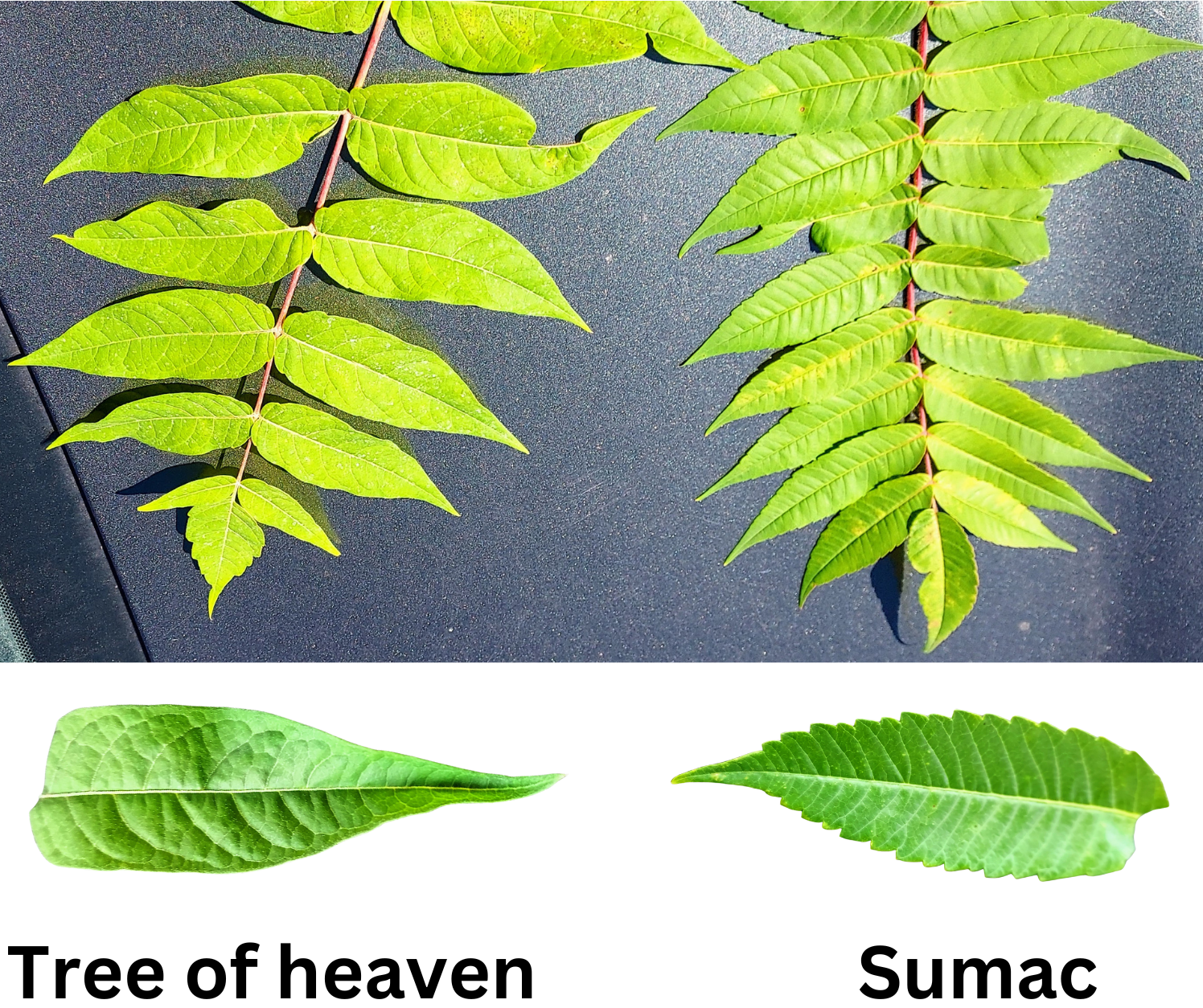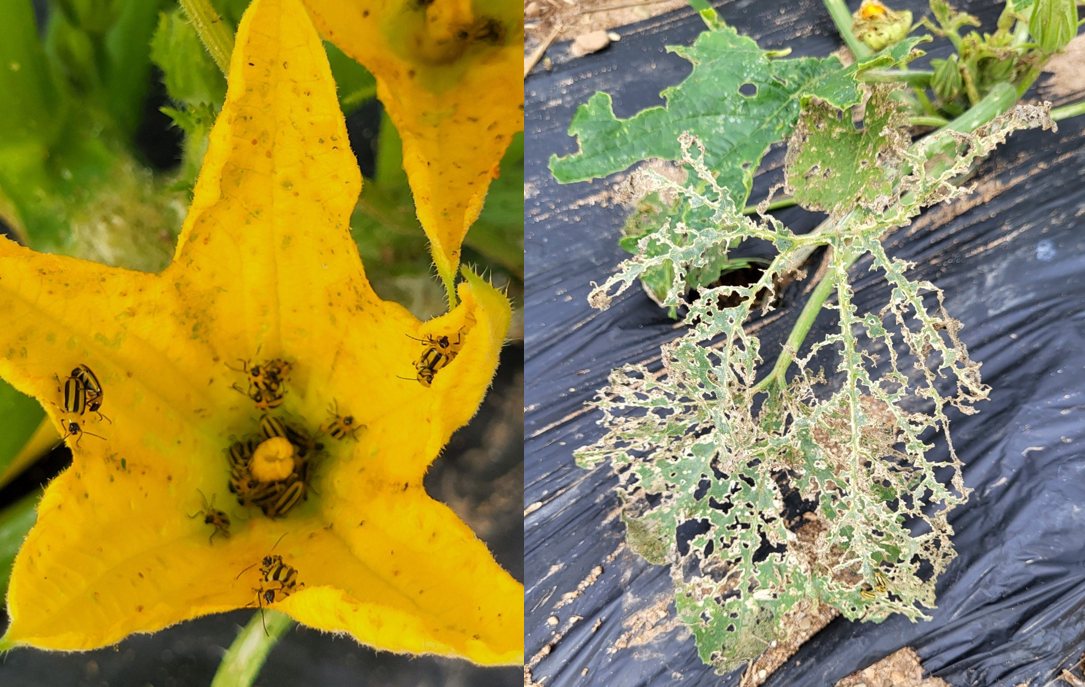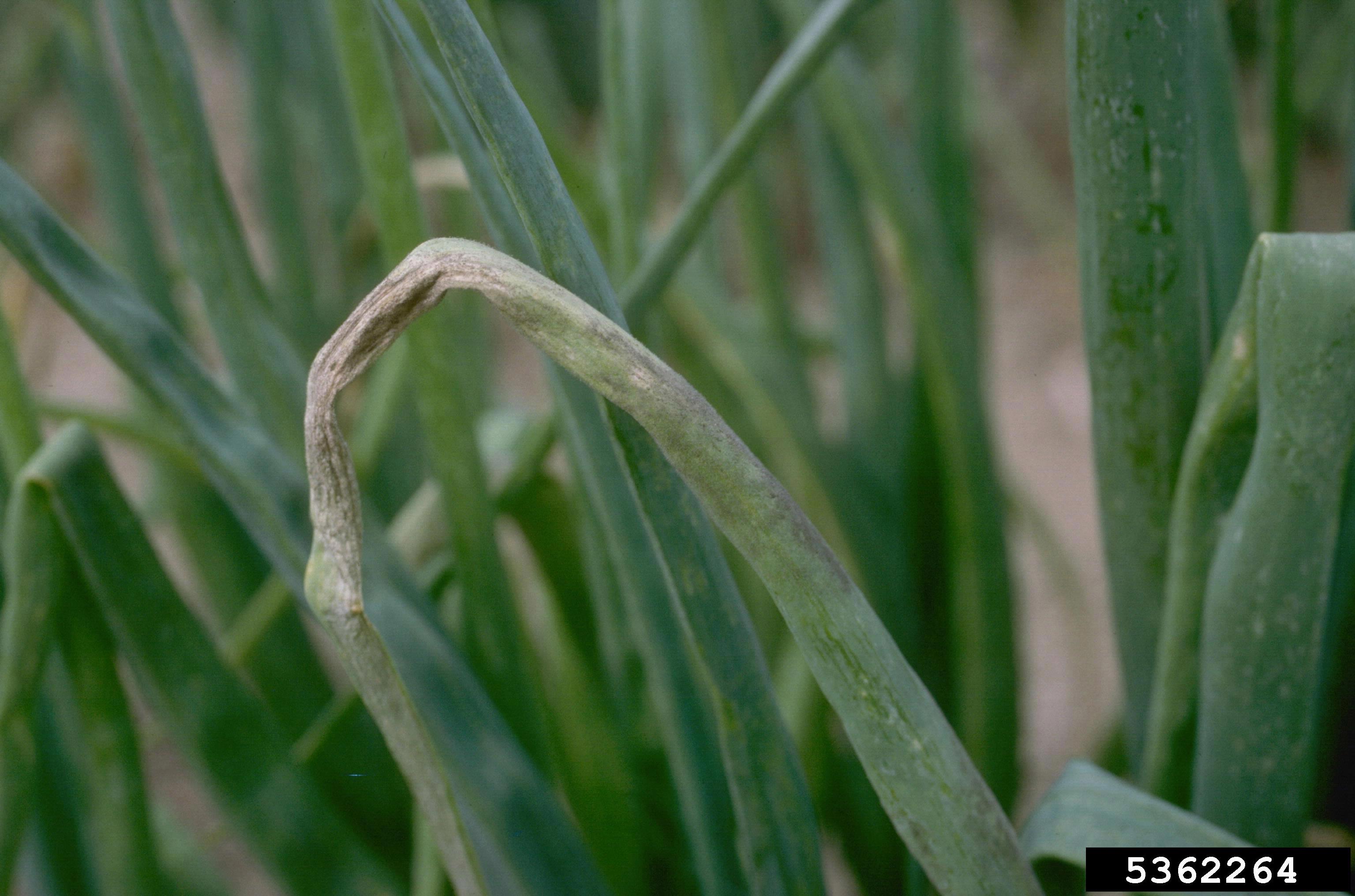Michigan vegetable crop report – August 14, 2024
Fall crops are going in and harvest rolls on.

Weather
For the past week, temperatures were 1-6 degrees Fahrenheit below normal with fair, dry weather. Precipitation ranged from less than 0.25 inches in parts of the western lower to 0.5-1 inch in the southeast. The western Upper Peninsula got some much needed rain. Cool weather means degree-day surpluses skinned down to several days in parts of the Lower Peninsula, to behind normal in the western Upper Peninsula.
The upcoming week’s weather is forecast to be:
- Mostly sunny, dry and warm Wednesday, Aug. 14. Showers and scattered thunderstorms developing west and spreading east by late Thursday overnight into Friday morning. Showers and thunderstorms likely Friday. Scattered showers possible Saturday through Sunday. Fair and dry early next week.
- High temperatures in the low to mid-80s Wednesday, falling back to the mid- to upper 70s by Friday, continuing into early next week. Low temperatures generally in the upper 50s to the north to low 60s to the south.
- Normal to below normal daily potential evapotranspiration (PET) rates expected this week with average daily values from 0.13-0.16 inches.
- Medium range outlooks generally call for cooler than normal temperatures through the end of next week gradually warming back to above normal levels by late in the month. Normal to below normal precipitation totals are expected.
Crop updates
Asparagus
The period between about July 29 and Aug. 2 was extremely favorable for purple spot development. The cooler, less humid weather for the past week was a nice break. Between 3-8 disease severity values (DSV) accumulated between Aug. 6-12 at 10 Oceana and Mason County fields with weather sensors. At these locations, a fungicide application would have been indicated this Monday, Aug. 12, if nothing had been applied since around July 29–Aug. 2.
Tree of heaven is reportedly becoming more common in asparagus fields. Growers have even seen it in fields that were previously annually tilled (i.e., not just old orchard land). Tree of heaven could possibly move into asparagus either through its wind dispersed seeds, similar to maple tree seeds, or by root suckers. Either way, consider looking around the landscape outside of asparagus and controlling it where you can. Once it arrives in asparagus, control options are limited.
Tree of heaven may be mistaken for sumac. Tree of heaven has leaves with smooth edges while sumac leaves have teeth along their edges, like a sawblade.

Control with systemic herbicides could be done any time from mid-July up until first fall color. One option is to target small-diameter shoots with glyphosate spot treatments to foliage as long as you can limit contact with fern. Larger diameter trunks could be targeted with a hack and squirt treatment. Cut stump application will not be effective as tree of heaven can resprout from suckers. Further, basal bark treatments will not work well with glyphosate. It is a water-soluble herbicide that will not penetrate the bark. Tree of heaven will likely resprout from suckers next spring; resprouts can be targeted with glyphosate, dicamba or other herbicides.
Read more about controlling tree of heaven from Rutgers Cooperative Extension or PennState Extension, but note these articles include discussion of control in non-crop areas, so not all products are usable in asparagus. Please talk about these application methods with crop consultants who have good experience with what is safe, and not safe, in asparagus.
Brassicas and greens
Broccoli, kohlrabi, some cabbage, kale and salad mixes of all types are flowing into markets. Shorter maturity cole crops are being seeded for fall harvest. The cooler weather of autumn makes many leafy greens much less prone to bolting or slow growth. White mold has been reported as a significant problem on some farms this season. Other diseases like black rot are also being reported. All caterpillars and beetles can be found, with thrips as well in some situations. Post-emergent herbicide options for brassicas are fairly limited, so weeds have been a challenge in some fields where they were missed by early preemergent applications.
Carrots and celery
Eight and nine DSVs accumulated at two west central Michigan carrot fields Michigan State University Extension is monitoring. At these locations, a fungicide application would have been indicated Monday if nothing had been applied since around Aug. 1.
Cucurbits
All crops are being harvested, and pumpkins are sizing as powdery mildew settles in across the state. Plectosporium blight can also be found.

Striped cucumber beetle populations are still very high in some areas as the second generation of the season emerges and wreaks havoc. Spotted cucumber beetle and northern corn rootworm adults are also being seen. For those who grow organically, keeping these malicious beetles at bay can require a more holistic approach. Many will have heard of or tried Surround WP (kaolin clay), which provides a particle film that physically deters feeding. Insect netting laid at seeding or transplanting can prevent the beetles from feeding and egg laying, but must be removed at bloom to accommodate pollinators. Among the many types of cucurbits, there is a continuum of preference when it comes to cucumber beetle feeding. Growing a preferred type like blue hubbard squash as a sacrificial trap crop can help spare your desired crops and concentrate beetles for management.
Stay vigilant against downy mildew and Phytophthora pathogens. Downy mildew on cucumber has been confirmed in 17 Michigan counties across all major production regions. Michigan State University’s (MSU) spore trapping project continues to confirm the presence of clade 2 of the downy mildew pathogen, indicating cucumbers and melons are likely to become significantly diseased during this year’s outbreak. Next week will be the last of the spore trapping for the season. Mary Hausbeck’s MSU vegetable pathology program has developed short fact sheets that are regularly updated to include the most effective and recommended fungicides that have been shown in years of field trials to be effective against these destructive pathogens.
Phytophthora crown and fruit rot symptoms are likely to increase following some of the recent rains that many areas of the state have experienced. There are helpful fact sheets for each cucurbit type. Growers who use these greatly appreciate them.
Fruiting vegetables
Eggplants are going to market now, as well as peppers, tomatoes and okra. Tough love in the greenhouse means less heartbreak in the field from bacterial spot.
Onions
Stemphylium leaf blight is evident where good disease control is lacking. Downy mildew has been noted and is not surprising given some of the wet conditions that have occurred during this growing season. Downy mildew occurs every three to four years in Michigan. It can be an especially devastating disease because it spreads rapidly and is not readily controlled. Downy mildew first infects older leaves, occurring as pale, elongated patches that may have a grayish-violet fuzzy growth appear early in the morning during moist periods. Lesions can be violet purple; affected leaves become pale green then yellow and can fold over and collapse. Infection can be systemic, with stored bulbs becoming soft, wrinkled, watery and amber in color. Asymptomatic bulbs can sprout prematurely and form light green foliage.
Peronospora destructor initiates infection during cool temperatures (less than 72 F) and wet conditions. Multiple infection cycles can occur in a season, and consist of nine to 16 days of latency, one to two days of sporulation, dispersal and infection. Spores are produced at night and dispersed during the day, where they can survive on host leaves for one to three days. Four infection cycles can almost completely destroy the foliage of an onion field. High daytime temperature and short or interrupted periods of humidity at night can prevent sporulation of the fungus. The fungus overwinters in volunteer onions, other host plants, onion cull piles and in stored infected bulbs.

Potatoes
Some viruses have been reported. Late blight has been detected in two fields in St. Joseph Couny, Michigan. The genotype is US-23, which remains sensitive to mefenoxam/metalaxyl. How can you irrigate to minimize leaf wetness? One technique is to apply overhead water at a time when the crop would be wet anyway (e.g., early morning), which will allow the foliage time to dry during the day. Potato beetle pressure is starting to wind down. Potatoes are being machine harvested in southern Michigan.
Sweet corn
Harvests are coming in strong, and things are ripening earlier than expected, which is on trend for the season so far.
Check your earworm traps at the end of this week. The Insect Forecast website predicts a low to moderate risk of a corn earworm migration tomorrow, Aug. 15. This is about the time of year that higher moth captures can begin. Products containing the active ingredients chlorantraniliprole or spinetoram may perform better than pyrethroids if and when captures increase.
See earworm catches in MSU Extension traps for the week to date below. To our south, trap catches increased at some western Indiana locations in Purdue’s trap network, while others remained low. Captures were low to zero in Ohio State’s.
|
Corn earworm captures. Total in trap for week1 (avg # per night2) |
||||||||
|---|---|---|---|---|---|---|---|---|
|
Week |
Monroe County |
Washtenaw County |
Oceana County |
Ottawa County |
Lapeer County |
Bay County |
Saginaw County |
Berrien County |
|
8/12 |
0 (0.0) |
0 (0.0) |
- |
- |
0 (0) |
0 (0.0) |
3 (0.4) |
5 (0.7) |
|
8/5 |
1 (0.1) |
0 (0.0) |
6 (0.9) |
28 (4.0) |
- |
1 (0.1) |
1 (0.1) |
4 (0.5) |
|
7/29 |
4 (0.5) |
0 (0.0) |
4 (0.7) |
13 (1.6) |
0 (0.0) |
0 (0.0) |
0 (0.0) |
3 (0.4) |
|
7/22 |
2 (0.4) |
0 (0.0) |
1 (0.1) |
0 (0.0) |
|
1 (0.1) |
0 (0.0) |
4 (0.5) |
|
7/15 |
0 (0.0) |
1 (0.1) |
8 (1.1) |
15 (1.7) |
2 (0.3) |
0 (0.0) |
|
|
|
7/8 |
0 (0.0) |
2 (0.2) |
8 (1.1) |
14 (2.0) |
|
|
|
|
|
6/30 |
|
|
5 (1.0) |
30 (6.0) |
|
|
|
|
|
6/23 |
|
|
2 (1.0) |
|
|
|
|
|
|
1Total number collected since last trap check; 2The total number divided by the number of nights since the last trap check. |
||||||||
Ohio State University noted they are starting to see damage from fall armyworm.
The time for worrying about western bean cutworm is likely past.
|
Western bean cutworm captures. Total in trap for week1 (avg # per night2) |
|||||||
|---|---|---|---|---|---|---|---|
|
Week |
Monroe County |
Washtenaw County |
Oceana County |
Ottawa County |
Saginaw County |
Bay County |
Berrien County |
|
8/12 |
0 (0.0) |
0 (0.0) |
|
|
6 (0.8) |
2 (0.3) |
10 (1.4) |
|
8/5 |
0 (0.0) |
1 (0.1) |
5 (0.7) |
15 (2.1) |
16 (2.3) |
3 (0.4) |
6 (0.8) |
|
7/29 |
0 (0.0) |
1 (0.1) |
5 (0.8) |
40 (5.0) |
19 (2.7) |
6 (0.8) |
5 (0.7) |
|
7/22 |
2 (0.4) |
2 (0.3) |
17 (2.1) |
65 (16.2) |
352 (50.2) |
3 (0.4) |
1 (0.1) |
|
7/15 |
6 (0.7) |
26 (3.7) |
12 (1.7) |
190 (21.1) |
133 (19) |
|
|
|
7/8 |
5 (0.7) |
29 (3.6) |
3 (0.4) |
127 (18.1) |
26 (3.7) |
|
|
|
6/30 |
|
|
0 (0.0) |
11 ( 2.2) |
5 (0.7) |
|
|
|
6/23 |
|
|
0 (0.0) |
|
5 (0.7) |
|
|
|
1Total number collected since last trap check; 2The total number divided by the number of nights since the last trap check |
|||||||
Earworm can be managed with pyrethroid, diamide and spinosyn insecticides. Pyrethroids are effective when moth pressure is not high, and include Hero, Ambush/Pounce, Asana, Baythroid, Brigade, Mustang Maxx and Warrior. Products with the diamide chlorantraniliprole (Besiege, Vantacor, Coragen) or the spinosyn spinetoram (Radiant, Intrepid Edge) are effective options for periods with high pressure. Spraying can be discontinued once corn has 90% brown silks, as it’s the green silks that attract egglaying females.
Nutrient management survey
Soil nutrient deficiencies that limit crop yield are often foremost on farmer’s minds but nutrient excesses, especially phosphorus and nitrogen, seem to grab the headlines. Michigan State University Extension is asking farmers from all types of production systems to help identify practices they use by filling out a brief anonymous online survey describing soil conditions and approaches used for soil phosphorus and nitrogen management. Read more information and access the survey.
Produce food safety On-Farm Readiness Reviews
Schedule an On-Farm Readiness Review (OFRR) today for a 2-hour educational visit that takes place during the harvest season and is meant to be casual and low stress! Everything discussed during an OFRR is confidential and focused on ways you can reduce your own risks in relation to produce safety. There is no pressure to take our advice either, we are just here to support you in your produce safety efforts!
Events
- Aug. 15, 7-8 a.m., Field Crops Virtual Breakfast Series: Field Crops Nematode Update
- Aug. 20, 6-8 p.m., Veggie Vibes at SWMREC
- Aug. 20, Bean and Beet Day at the Saginaw Valley Research and Extension Center, Frankenmuth, MI
- Aug. 22, 7-8 a.m., Field Crops Virtual Breakfast Series: Lime Recommendations for Field Crops
- Aug. 22, Summer Bus Tour and Annual Field Day at the Northwest Michigan Horticulture Research Center, Traverse City, MI
- Aug. 27, Drone Demonstration for Pest Management Meeting at the Northern Farm Market, Bruce Twp, MI
- Aug. 29, 7-8 a.m., Field Crops Virtual Breakfast Series: Maximizing Wheat Yield Potential
- Sept. 5, 7-8 a.m., Field Crops Virtual Breakfast Series: Drought-Proofing Agriculture with Drainage Water Recycling
- Sept. 5, 3-7 p.m., Organic Vegetable Production Workshop & Crop Walk, MSU Tollgate Center, Novi, MI
- Sept. 5, Long-Term Agroecosystems Research Field Day at the W. K. Kellogg Biological Station.
- Sept. 12, 7-8 a.m., Field Crops Virtual Breakfast Series: Grain Marketing
- Sept. 17, 6-8 p.m., Veggie Vibes at SWMREC
- Sept. 19, 7-8 a.m., Field Crops Virtual Breakfast Series: Late Season Weed Control
- Sept. 23, Field Day at the Trevor Nichols Research Center, Fennville, MI
This work is supported by the Crop Protection and Pest Management Program [grant no. 2021-70006-35450] from the USDA National Institute of Food and Agriculture. Any opinions, findings, conclusions, or recommendations expressed in this publication are those of the author(s) and do not necessarily reflect the view of the U.S. Department of Agriculture.



 Print
Print Email
Email




